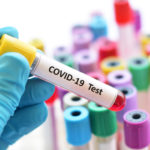
G6PDH Deficiency in Paediatrics
Glucose-6-phosphate dehydrogenase (G6PDH) deficiency, an x-linked recessive disorder, stands out as one of the most widespread enzyme deficiencies globally. With over 400 million people affected worldwide, this condition is particularly prevalent in tropical and sub-tropical regions, notably in countries endemic to malaria such as those in Africa, the Middle East, and South Asia. 1, 2.
Aetiology of G6PDH
The Gd gene, situated on the X chromosome’s long arm, is tasked with encoding the G6PDH enzyme. This enzyme resides in the cytoplasm of cells and plays a crucial role in the typical metabolism of carbohydrates. Particularly vital in erythrocytes, the G6PDH enzyme safeguards them from harm and premature breakdown. Deficiency in G6PDH stems from mutations affecting the protein’s structure, leading to a reduction in its activity or the quantity of enzyme produced 3.
G6PDH initiates the first step in the pentose phosphate pathway (PPP), an alternative branch of glycolysis dedicated to converting glucose into ribose-5-phosphate (R5P). R5P holds critical significance as a fundamental building block of nucleotides, essential components of nucleic acids (DNA and RNA). This enzymatic process also generates NADPH as a by-product, a crucial molecule in safeguarding cells against reactive oxygen species (ROS). In erythrocytes, or red blood cells (RBCs), this NADPH production by G6PDH becomes particularly essential. RBCs, being engaged in oxygen transport, lack other NADPH-producing enzymes, making them susceptible to oxidative stress from ROS 3.
Pathophysiology of G6PDH
The G6PD gene exhibits over 200 variants (mutations) associated with G6PDH deficiency. Virtually all of these variants induce alterations in the amino acids of the G6PDH enzyme, leading to disruptions in its usual structure and function. This, in turn, either impairs the enzyme’s normal activity or diminishes the quantity it produces within the cytoplasm of cells 3.
Decreased levels of G6PDH means that RBCs are unable to protect themselves against ROS and thus, oxidative damage, resulting in the RBCs undergoing haemolysis (premature breakdown and destruction of RBCs) 3.
Numerous individuals remain asymptomatic for most of their lives until they encounter triggering factors, such as infection, specific drugs (refer to table 1), or the consumption of certain foods like fava beans. These factors elevate reactive oxygen species (ROS) levels, accelerating the haemolysis of erythrocytes at a rate surpassing the body’s ability to replenish them. The consequent loss of red blood cells leads to haemolytic anaemia, a prominent feature of G6PDH deficiency 4.
Table 1: Medications Which Can Trigger Haemolysis in G6PDH Deficiency 4
| Acetaminophen | Methylene Blue | Sulfacytine |
| Acetylsalicylic Acid | Nitrofurantoin | Sulfadiazine |
| Chloramphenicol | Phenazopyridine | Sulfaguanidine |
| Colchicine | Primaquine | Sulfamethoxazole |
| Diaminodiphenyl Sulfone | Rasburicase | Sulfisoxazole |
| Diphenhydramine | Streptomycin | Trimethoprim |
| Glyburide | Sulfacetamide | Tripelennamine |
| Isoniazid | Sulfanilamide | Vitamin K |
| L-Dopa | Sulfapyridine |
G6PDH Deficiency in Paediatrics
Newborns with G6PDH deficiency initially exhibit normal characteristics at birth. However, they may later develop neonatal jaundice and experience significant haemolysis, reaching a severity that can lead to neurological damage or even death. Despite these severe complications during the newborn period, individuals with G6PDH deficiency typically undergo normal growth and development afterward 5.
G6PDH deficiency poses a significant risk for the occurrence of hyperbilirubinemia in neonates, doubling their susceptibility. Additionally, G6PDH deficiency is linked to 20% of cases of kernicterus, a form of neurological damage induced by bilirubin. Although kernicterus is uncommon, neonates who manifest jaundice within the initial 24 hours of life, exhibit bilirubin levels surpassing the 95th percentile, or have a sibling with a history of neonatal jaundice should undergo G6PDH testing 4.
G6PDH Deficiency and Malaria in Paediatrics
Malaria stands as the primary cause of mortality in tropical and sub-tropical regions. Although there is a notion that G6PDH deficiency may provide a degree of protection against malaria, it is crucial to note that malaria treatment can pose a fatal risk for individuals with G6PDH deficiency 2, 6, 7, 8.
Glucose-6-phosphate dehydrogenase deficiency and the risk of malaria and other diseases in children in Kenya: a case-control cohort study (2015) 9
In a case-control investigation involving 2,220 cases (individuals under 14 years with severe malaria) and 3,940 controls (ages 3-12 months born in the same study area) in Kenya, the research revealed noteworthy findings. Heterozygous girls carrying the G6PDH c.202T allelic form of G6PDH deficiency exhibited significant protection against severe and complicated P. falciparum malaria. Conversely, children with G6PDH deficiency faced a significantly elevated risk of severe malaria anaemia.
Association of glucose-6-phosphate dehydrogenase deficiency and malaria: a systemic review and meta-analysis (2017) 7
A systematic review encompassing thirteen databases was conducted to document any alterations in G6PDH among malaria patients. Of the thirty studies included, twenty-eight were deemed eligible for meta-analysis. The breakdown of these thirty studies is as follows: seventeen studies, comprising 21 datasets, focused on African patients, eleven studies with 14 datasets centred on Asian patients, one study on Brazilian patients, and another conducted in Papua New Guinea. Among these studies, seven were case-control, one was a randomized double-blinded clinical trial, and the rest were cross-sectional studies. Sixteen studies exclusively involved infants and children, while the remaining studies included both adults and children.
The study’s findings indicated that G6PDH deficiency could potentially offer protection against uncomplicated malaria in African countries, with a notable emphasis on heterozygous cases. However, this protective effect did not extend to severe malaria.
Safety of primaquine in infants with Plasmodium vivax malaria in Papua, Indonesia (2019) 10
A retrospective cohort study conducted in Indonesia focused on infants aged 1-12 months diagnosed with vivax malaria from 2004 to 2013. A total of 4,078 infants, with 1,228 aged between 1 and 6 months and 2,453 aged between 6 and 12 months, were admitted to the hospital for the first time due to vivax malaria.
The study’s conclusion highlighted the critical importance of G6PDH testing in infants. This is especially crucial considering the potential life-threatening consequences of haemolysis resulting from either recurrent P. vivax malaria or anti-relapse treatment in G6PDH deficient infants. The study emphasized that G6PDH testing is essential to ensure the safe deployment of radical cure to those who require it the most.
Glucose-6-phosphate dehydrogenase deficiency and susceptibility to childhood diseases in Kilifi, Kenya 11
In an African case-control investigation, 6,829 children under the age of 14 were admitted to Kilifi County Hospital, with 10,179 controls recruited from the nearby community. The cases were further categorized based on their clinical and laboratory findings upon admission.
The study’s findings indicated that, despite G6PDH c.202 deficiency not being significantly associated with a major risk of severe intravascular haemolysis, it played a substantial role in almost half of all neonatal jaundice cases.
G6PDH Deficiency and COVID
Research has revealed that cells lacking G6PDH are more susceptible to the human coronavirus compared to cells with normal G6PDH. Interestingly, G6PDH deficiency went unnoticed during the COVID-19 pandemic, possibly due to its rarity in regions heavily affected by COVID-19. For instance, in Hubei province, China, the prevalence of G6PDH deficiency is only 0.098%12.
Observations have highlighted that individuals with G6PDH deficiency who contract COVID-19 exhibit a higher susceptibility to both haemolysis and thrombosis. Furthermore, there are reports indicating that G6PDH deficiency in individuals with COVID-19 tends to worsen the disease. In certain cases, an escalation in haemolysis and thrombosis has been observed when patients undergo treatment with hydroxychloroquine, attributable to the oxidative properties of the drug 13.
Conclusion
In summary, G6PDH deficiency stands out as one of the most prevalent enzyme deficiencies, impacting over 400 million individuals. Its prevalence is particularly notable in malaria-endemic regions, where it can lead to severe and life-threatening complications. Depending on the genotype, G6PDH deficiency may confer protective properties against malaria. Nonetheless, routine testing for G6PDH is crucial, especially in malaria-endemic areas, prior to prescribing malaria medication, as it has the potential to induce haemolysis.
Furthermore, emerging links between G6PDH deficiency and COVID-19 underscore the importance of routine G6PDH testing in a broader medical context.
Biorex G6PDH Solutions
| Description | Cat Code | Kit Size | Category |
| G6PDH (Lyo.) Digitonin (UV) | BXC0571A | R1: 2 x 50ml R2: 1 x 2ml R3: 1 x 2ml R4: 1 x 20ml | Clinical Chemistry Reagent |
| G6PDH (Lyo.) UV VISUAL | BXC0574A | 25T | Clinical Chemistry Reagent |
| G6PDH (Lyo.) UV VISUAL | BXC0574B | 50T | Clinical Chemistry Reagent |
| G6PDH (Lyo.) UV VISUAL | BXC0574C | 100T | Clinical Chemistry Reagent |
| G6PDH (Lyo.) UV VISUAL | BXC0574D | 500T | Clinical Chemistry Reagent |
| G6PDH (Lyo.) UV VISUAL | BXC0574E | 800T | Clinical Chemistry Reagent |
| G6PDH Control Deficient | BXC0572B | 3 x 1ml | Quality Control |
| G6PDH Control Normal | BXC0573B | 3 x 1ml | Quality Control |
Quote our promotional code ‘G6PDH24’ for a discount on G6PDH products.
References
- Isaac IZ, Mainasara AS, Erhabor O, Omojuyigbe ST, Dallatu MK, et al. Glucose-6-phosphate dehydrogenase deficiency among children attending the Emergency Paediatric Unit of Usmanu Danfodiyo University Teaching Hospital, Sokoto, Nigeria. International Journal of General Medicine 2013; 6(PMC3711754). https://www.ncbi.nlm.nih.gov/pmc/articles/PMC3711754/ (accessed 22 January 2024).
- Moorthie S. Link between G6PD deficiency and malaria. https://www.phgfoundation.org/news/link-between-g6pd-deficiency-and-malaria (accessed 22 January 2024).
- Medline Plus. G6PD gene. https://medlineplus.gov/genetics/gene/g6pd/ (accessed 22 January 2024).
- Richardson SR, O’Malley GF. Glucose-6-Phosphate Dehydrogenase Deficiency.Treasure Island: StatPearls; 2023. https://www.ncbi.nlm.nih.gov/books/NBK470315/ (accessed 22 January 2024).
- Glucose-6-phosphate dehydrogenase (G6PD) deficiency. https://rh.perkinelmer.com/disorders/g6pd-deficiency (accessed 23 January 2024).
- Peters AL, Van Noorden CJF. Glucose-6-phosphate Dehydrogenase Deficiency and Malaria: Cytochemical Detection of Heterozygous G6PD Deficiency in Women. Journal of Histochemistry and Cytochemistry 2009; 57(11). https://www.ncbi.nlm.nih.gov/pmc/articles/PMC2762880 (accessed 23 January 2024).
- Mbanefo EC, Ahmed AM, Titouna A, Elmaraezy A, Trang NTH, et al. Association of glucose-6-phosphate dehydrogenase deficiency and malaria: a systematic review and meta-analysis. Scientific Reports 2017; 7(45963). https://www.ncbi.nlm.nih.gov/pmc/articles/PMC5382680/ (accessed 23 January 2024).
- Vivax Information Hub. G6PD deficiency. https://www.vivaxmalaria.org/diagnosis-treatment/g6pd-deficiency (accessed 23 January 2024).
- Uyoga S, Ndila CM, Macharia AW, Nyutu G, Shah S, et al. Glucose-6-phosphate dehydrogenase deficiency and the risk of malaria and other diseases in children in Kenya: a case-control and a cohort study. The Lancet Haematology 2015; 2(10). https://www.ncbi.nlm.nih.gov/pmc/articles/PMC4703047 (accessed 23 January 2024).
- Setyadi A, Arguni E, Kenangalem E, Hasanuddin A, Lampah DA, et al. Safety of primaquine in infants with Plasmodium vivax malaria in Papua, Indonesia. Malaria Journal 2019; 18(111). https://malariajournal.biomedcentral.com/articles/10.1186/s12936-019-2745-7 (accessed 23 January 2024).
- Uyoga S, Macharia AW, Ndila CM, Nyutu G, Shebe M, et al. Glucose-6-phosphate dehydrogenase deficiency and susceptibility to childhood diseases in Kilifi, Kenya. Blood Advances 2020; 4(23). https://www.sciencedirect.com/science/article/pii/S2473952920320206 (accessed 23 January 2024).
- Al-Abdi S. G6PD deficiency in the COVID-19 pandemic: Ghost within Ghost. Hematology/Oncology and Stem Cell Therapy 2021; 14(1). https://www.ncbi.nlm.nih.gov/pmc/articles/PMC7166036/ (accessed 23 January 2024).
- Hernández-Ochoa B, Ortega-Cuellar D, González-Valdez A, Cárdenas-Rodríguez N, Cárdenas-Rodríguez N, et al. COVID-19 in G6PD-deficient Patients, Oxidative Stress, and Neuropathology. Current Topics in Medicinal Chemistry 2022; 22(16). https://pubmed.ncbi.nlm.nih.gov/35578850/ (accessed 23 January 2024).







